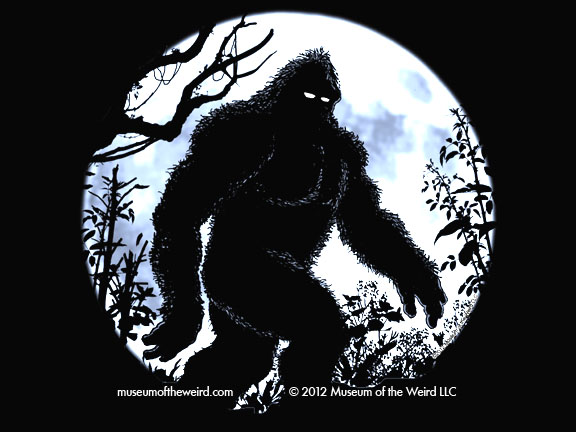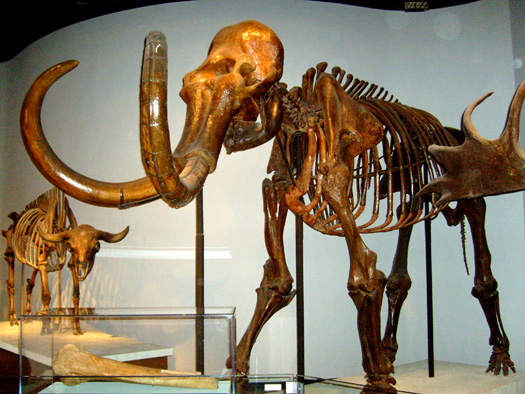[youtube http://www.youtube.com/watch?v=946w7SBqDmc&version=3&hl=en_US]
Category: Archaeology & Paleontology
PREHISTORIC MACHINERY DISCOVERED IN RUSSIA
Let’s take a brief look back 300 million years into Earth’s history. Just what was happening at this volatile juncture in time? The planet was dominated by a single supercontinent known as Pangaea amidst the massive ocean known as Panthalassa. Deserts covered the majority of the interior of the continent where the first reptiles began to rise to dominance. The Permian Era saw the evolution of amniotes into the first groups of mammals, turtles, lepidosaurs and archosaurs. Hardly the time one would picture ancient machinery being constructed by an alien race. However, according to the Voice of Russia and other sources this was a time when some of our cosmic cousins just may have set up residence within the primordial chaos of prehistoric Earth.
Sections of an aluminum gear rail found near Vladivostok are now believed to have been manufactured by a possible ancient alien civilization. A resident discovered the artifact when the light of his fire revealed the outline of what appeared to be a piece of machinery in a clump of coal he was about to use to heat his home. Convinced that what he possessed was more than merely a naturally occurring coincidence the man sought out the professional opinions of scientists located in the Primorey region of Russia. After lengthy analysis by said scientists, it was determined that the approximate age of the artifact is 300 million years. This is an assumption, however, due to the fact that the coal being used by the man was delivered to the Primorey area from the Chernogorodskiy mines of Khakasia region of the same age. It is not specified as to whether or not this artifact has been carbon-dated—as to what tests exactly were run on the gear rail, it is also not revealed.
The discovery of such artifacts is surprisingly not that uncommon. In 1851 workers removed a zinc and silver vase embedded in a block of coal. This vase was carbon-dated and estimated to be nearly 500 million years in age. Six decades after the initial discovery scientists in Oklahoma extracted an iron pot, also embedded in coal, which they later determined to be 312 million years old. The most recent artifact, before the current Russian gear rail, was in 1974—an aluminum “assembly part” was found within a sandstone quarry in Romania. The item was said to resemble either a hammer or the leg of an unknown spacecraft, such as that used in Earth’s own “Apollo”, and was dated to be from the Jurassic era. Can we say Aliens meets Jurassic Park?
Natalia Ostrowski at the KP UA Daily stated that the Russian machine part holds similarities in its design to that of modern microscopes and various technical and electronic devices. Currently, the theory that this new item is evidence of ancient alien inhabitants is based largely on the presence of magnesium-26. Aluminum-26, which is an off-world element found only in meteorites, breaks down into magnesium-26 over time as it interacts with Earth’s atmosphere. This points to either the gear itself having been manufactured elsewhere in the universe or that it was the product of alloy brought to Earth millions of years ago from another world.
Analysis of the Russian gear rail continues as world experts search for the truth behind its origins. Look for our updates as news surfaces!
EVIDENCE OF NEANDERTHAL-HUMAN HYBRID IN NORTHERN ITALY
The theory of a Neanderthal-human hybrid may now be considered scientific fact after evidence that was presented in northern Italy earlier this week revealed a distinctive crossover of genetic traits between the two species. A paper published on PLoS ONE discusses aspects of the discovered skeletal remains, including fragments from a jawbone and cranium, which point to the gradual crossbreeding of the Homo neanderthalensis with the modern Homo sapiens, or humans.
Further analysis is needed to cement the theory, but if proven correct, the 30,000 to 40,000 year-old remains will be of the very first hybrid in existence. Previously, genetic research had revealed that humans with DNA of European and Asian descent were between one and four percent Neanderthal. However, the evidence up until now was not conclusive and based solely on “ambiguous fossils.” The Neanderthal genetic line declined and eventually vanished around 30,000 years ago through a mix of interbreeding and human conquest.
The fossilized jawbone and cranial fragments was discovered in 1957 in Riparo Mezzena in the Monti Lessini mountains of northern Italy. Researchers analyzed the mitochondrial DNA (mtDNA), which revealed the Neanderthal lineage. However, the shape of the bone possessed characteristics more closely in line with traits of the modern human. Since mitochondrial DNA is passed down from mother to child, researchers have concluded that the remains are from a “female Neanderthal who mated with male Homo sapiens.”
“From the morphology of the lower jaw, the face of the Mezzena individual would have looked somehow intermediate between classic Neanderthals, who had a rather receding lower jaw (no chin), and the modern humans, who present a projecting lower jaw with a strongly developed chin,” said study co-author Silvana Condemi, an anthropologist at the University of Ai-Marseille, to Discovery News.
Homo sapiens migrated into the Riparo Mezzena region approximately 41,000 years ago where the Neanderthal already possessed an established culture. The two species coexisted for a lengthy duration before the modern human finally dominated the territory and phased out the Neanderthal lineage. Some experts within the scientific community still doubt the hybrid theory pointing to evidence from Spain, which suggests the Neanderthal species was actually extinct thousands of years before the arrival of the modern Homo sapiens. Genetic similarities, they say, are the result of common ancient ancestors.
The debate and research of the Neanderthal-human hybrid theory will, no doubt, continue. To read the full article published on PLoS ONE visit http://www.plosone.org/article/info%3Adoi%2F10.1371%2Fjournal.pone.0059781.
FOR IMMEDIATE RELEASE: DNA STUDY CONFIRMS EXISTENCE OF BIGFOOT!

This incredible news was released today by Dr. Melba Ketchum, the head of the Bigfoot DNA study:
FOR IMMEDIATE RELEASE
‘BIGFOOT’ DNA SEQUENCED IN UPCOMING GENETICS STUDY
Five-Year Genome Study Yields Evidence of Homo sapiens/Unknown Hominin Hybrid Species in North America
Contact: Robin Lynne, media@dnadiagnostics.com, 231.622.5362
DALLAS, Nov. 24–A team of scientists can verify that their 5-year long DNA study, currently under peer-review, confirms the existence of a novel hominin hybrid species, commonly called “Bigfoot” or “Sasquatch,” living in North America. Researchers’ extensive DNA sequencing suggests that the legendary Sasquatch is a human relative that arose approximately 15,000 years ago as a hybrid cross of modern Homo sapiens with an unknown primate species.
The study was conducted by a team of experts in genetics, forensics, imaging and pathology, led by Dr. Melba S. Ketchum of Nacogdoches, TX. In response to recent interest in the study, Dr. Ketchum can confirm that her team has sequenced 3 complete Sasquatch nuclear genomes and determined the species is a human hybrid:
“Our study has sequenced 20 whole mitochondrial genomes and utilized next generation sequencing to obtain 3 whole nuclear genomes from purported Sasquatch samples. The genome sequencing shows that Sasquatch mtDNA is identical to modern Homo sapiens, but Sasquatch nuDNA is a novel, unknown hominin related to Homo sapiens and other primate species. Our data indicate that the North American Sasquatch is a hybrid species, the result of males of an unknown hominin species crossing with female Homo sapiens.
Hominins are members of the taxonomic grouping Hominini, which includes all members of the genus Homo. Genetic testing has already ruled out Homo neanderthalis and the Denisova hominin as contributors to Sasquatch mtDNA or nuDNA. “The male progenitor that contributed the unknown sequence to this hybrid is unique as its DNA is more distantly removed from humans than other recently discovered hominins like the Denisovan individual,” explains Ketchum.
“Sasquatch nuclear DNA is incredibly novel and not at all what we had expected. While it has human nuclear DNA within its genome, there are also distinctly non-human, non-archaic hominin, and non-ape sequences. We describe it as a mosaic of human and novel non-human sequence. Further study is needed and is ongoing to better characterize and understand Sasquatch nuclear DNA.”
Ketchum is a veterinarian whose professional experience includes 27 years of research in genetics, including forensics. Early in her career she also practiced veterinary medicine, and she has previously been published as a participant in mapping the equine genome. She began testing the DNA of purported Sasquatch hair samples 5 years ago.
Ketchum calls on public officials and law enforcement to immediately recognize the Sasquatch as an indigenous people:
“Genetically, the Sasquatch are a human hybrid with unambiguously modern human maternal ancestry. Government at all levels must recognize them as an indigenous people and immediately protect their human and Constitutional rights against those who would see in their physical and cultural differences a ‘license’ to hunt, trap, or kill them.”
Full details of the study will be presented in the near future when the study manuscript publishes.
UPDATE: BALTIC SEA ‘ANOMALY’ IS A GIANT MUSHROOM!

We posted a story a couple of weeks ago detailing the discovery of a strange, underwater anomaly laying at the bottom of the Baltic Sea, while it most certainly looked like the Millenium Falcon had crashed into the sea floor, it turns out it is an absolutely humongous underwater mushroom!
Here’s the very first set of pictures from the team that went down to figure this out:
Huffington Post writes:
The unidentified circular object that has held the world in a viral grip for a year probably isn’t an alien spacecraft after all.
Over the past few days, divers have photographed the unusual anomaly on the seabed nearly 300 feet below the surface.
According to news released Friday by the OceanX treasure hunters who discovered the anomaly on June 19, 2011, “first they thought it was just stone or a rock cliff, but after further observations, the object appeared more as a huge mushroom, rising 10-13 feet from the seabed, with rounded sides and edges.
“The object had an egg-shaped hole leading into it from the top, as an opening. On top of the object they also found strange stone circle formations, almost looking like small fireplaces. The stones were covered in something resembling soot,” reports the OceanX website.
One of the OceanX divers, Stefan Hogeborn, a veteran of more than 6,000 dives in his 20-year career, is completely puzzled by what he saw.
Read more at huffingtonpost.com
IS THE SHARK MANS’ ANCIENT ANCESTOR?

Recent studies have revealed that humans may have evolved from a shark that dates back to 300 million years ago.
As research continues, more and more evidence is discovered that points our ancestral lines to a prehistoric shark that existed in a time when fish with cartilage and fish with bones (what humans are said to evolve from) were not separated into two different evolutionary lineages, yet.
Telegraph writes:
The primitive fish named Acanthodes bronni was the common ancestor of all jawed vertebrates on Earth – including mankind, according to new research.
Acanthodes, a Greek word for “spiny”, existed before the split between the earliest sharks and the first bony fishes – the lineage that would eventually include human beings.
Fossils have been found in Europe, North America and Australia.
Compared with other spiny sharks it was relatively large, measuring a foot long. It had gills instead of teeth, large eyes and lived on plankton.
Professor Michael Coates, a biologist at the University of Chicago, said: “Unexpectedly, Acanthodes turns out to be the best view we have of conditions in the last common ancestor of bony fishes and sharks.
“Our work is telling us the earliest bony fishes looked pretty much like sharks, and not vice versa. What we might think of as shark space is, in fact, general modern jawed vertebrate space.”
Read more at telegraph.co.uk/news
LOST ‘WHITE CITY’ OF GOLD FOUND IN HONDURAS


Researchers at the University of Houston, together with the National Center for Airborne Laser Mapping (NCALM) have combined efforts to map an area of Honduras that legend says is hiding a full ‘White City’ of gold.
Looks like they found it.
Daily Mail writes:
A team of scientists using advanced laser mapping have detailed a remote region of Honduras that may have revealed the legendary lost city of Ciudad Blanca, known as the ‘White City’ of gold.
Researchers from the University of Houston and the National Center for Airborne Laser Mapping (NCALM) flew over the Mosquitia region in a small plane shooting billions of laser pulses at the ground to create a 3D digital map of the topology beneath the jungle canopy. Compiling their data, the analysts revealed what appears to be man-made elevation changes that are thought to show a forgotten city plaza dotted with pyramids reclaimed by the jungle.
According to legend, Ciudad Blanca or the ‘White City’ is full of gold and has been sought out by explorers and treasure hunters since conquistador Hernando Cortes first made reference to it in a 1526 letter to King Charles V of Spain. Inspired by this legend, cinematographer and Ciudad Blanca enthusiast Steven Elkins sought backing from private investors to pay for the team at NCLAM to use their laser mapping technology to chart the forest floor of Mosquitia.
Over the course of a week, the NCALM and University of Houston engineers flew over 60 square miles of forest in their dual-engine Cessna planes. And at the end of each day, the data was transferred to Bill Carter, a University of Houston engineer who works with the NCLAM. He discovered the first indications of what appeared to be man-made structures in the jungle.
‘I’m the only person right now on the planet that knows that there’s these ruins,’ said Carter as he recalled his thoughts when he saw straight lines and right angles on the 3D digital map. ‘My wife walked in and looked over my shoulder and she was the second person to know.’
This was one of the first times that laser mapping, specifically light detection and ranging (LiDAR) had been used to locate ancient ruins.
Read more: dailymail.co.uk
ANCIENT VAMPIRES UNEARTHED IN BULGARIA


All the recent news stories of “zombie attacks” recently have gotten people wondering if the creatures from our darkest nightmares and classic horror movies are becoming a reality. Well, the signs don’t look so good when you throw in finding a couple of people that were buried 800 years ago with stakes in their hearts! Sounds like one classic horror movie monster I think we’re all familiar with, the vampire!

Discovery News writes:
Two medieval “vampire” skeletons emerged near a monastery in the Bulgarian Black Sea town of Sozopol, local archaeologists announced.
Dating back 800 years to the Middle Ages, the skeletons were unearthed with iron rods pierced through their chests — evidence of an exorcism against a vampire. The ritual was aimed at preventing potentially dangerous people, such as enemies, murderers or individuals who died suddenly from a strange illness, from turning into vampires after death.
“The practice was common in some Bulgarian villages up until the first decade of the 20th century,” Bozhidar Dimitrov, chief of the National History Museum in Sofia, told reporters.
The newly discovered skeletons are the latest in a series of finds across Europe. According to Dimitrov, over 100 skeletons, buried in the same manner, had been unearthed in Bulgaria only.
Read more at news.discovery.com
MAMMOTH BONES FOUND IN IOWA MANS’ BACKYARD


Well, this just goes to show you that you never know what you might find if you look, even in your own backyard!
A man in Iowa discovered a set of ancient Mammoth bones while hunting for, of all things, blackberries.
Huffington Post writes:
When an Iowa family first stumbled across the strange object in their backyard, it looked like an old bowling ball. But imagine the surprise when the “ball” turned out to be part of a massivemammoth bone.
The bone was discovered two years ago, and now the family’s quiet home in Oskaloosa has turned into a bustling excavation site, where the bones are kept in the living room, according to ABC-affiliate ABC5-WOI in Des Moines. The University of Iowa Museum of Natural History reportedly has stepped in to oversee the research.
“The size of this discovery is quite uncommon,” Sarah Horgen, the museum’s education coordinator, told ABC News. “It’s pretty exciting-–partially because the mammoth is being discovered where it died. And we know that because we’re finding very large bones right alongside very small bones.”
The mammoth bones, reported to be at least 12,000 years old, were found about 10 feet underground. “The conditions of the bones were ideal,” archaeologist Marlin Ingalls of the Iowa State Archeologist’s office told The Huffington Post.
Read more at huffingtonpost.com
STUDENTS IN IDAHO CAPTURE BIGFOOT ON FILM (VIDEO)


While filming a project in the hills of Idaho, a couple of students captured something, something they’re not so sure they can explain.
The television show “Finding Bigfoot” on the other hand, thinks they know what it could be and are heading there now to see what they can find. Watch the video below, stay tuned for updates and leave any ideas of what you think it could be in the comments!
The Idaho State Journal writes:
What appears to be a large dark figure disappearing into the brush and trees on a hillside near the West Fork of Mink Creek was captured on a brief video clip made by Pocatello students recently.
The clip has spawned Bigfoot speculation and provides more data for an Idaho State University professor who has become a Bigfoot expert.
The students who chose to remain unidentified told Local News 8 they were on a field trip for a school project when they spotted a dark figure watching them from a ridge above them. One student took the digital video clip with his camera.
“It just didn’t look human like. I don’t know what that is, it’s not a bear, it’s not a moose or anything. It was big and bulky and black,” the student told Channel 8.
The students also told the television station that they climbed up the ridge and took photographs of large footprints they discovered.
Read more at idahostatejournal.com




